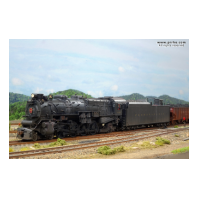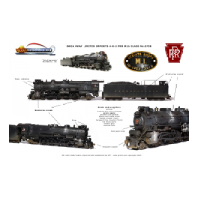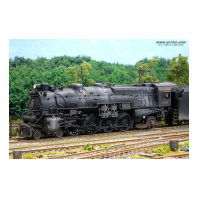
BALDWIN (PRR ALTOONA WORKS JUNIATA SHOPS) M1b 4-8-2 steam locomotive
Brief history.
The "Mountain" 4-8-2 was a fast dual-service steam locomotive that was bought by many railroads in need of more motive power for the ever increasing weight of passenger trains and to compete for fast freight. In North America (United States and Canada) 41 railroads bought or built 2.211 "Mountain" Locomotives. The New York Central and the Pennsylvania Railroad used a combined total of 901 or 41% of the total. The first one built was the Chesapeake & Ohio Railroad number 316 built in 1911 and the last one built was Baltimore & Ohio RR number 5594 in 1948.
The "Mountain" 4-8-2 was a fast dual-service steam locomotive that was bought by many railroads in need of more motive power for the ever increasing weight of passenger trains and to compete for fast freight. In North America (United States and Canada) 41 railroads bought or built 2.211 "Mountain" Locomotives. The New York Central and the Pennsylvania Railroad used a combined total of 901 or 41% of the total. The first one built was the Chesapeake & Ohio Railroad number 316 built in 1911 and the last one built was Baltimore & Ohio RR number 5594 in 1948.
The success of the M1 Mountain-type locomotives prompted the Pennsylvania Railroad to order 300 more locomotives of the 4-8-2 wheel arrangement in 1930, though several upgrades were incorporated in the new machines (100 class M1a/M1b from 1930). The new locomotives became the M1a class and had a longer wheelbase than the M1's due to the addition of the Worthington feedwater heater. They also received the new larger class 210F75 tenders with 31,5 tons of capacity (coal/oil), which became known as the coast-to-coast tenders. The first 50 M1a locomotives (6700-6749) were built by Baldwin; Juniata Shops (later known as Altoona Works) built the next 25 M1a's (6750-6774), and the remaining 25 were built by Lima and numbered 6775-6799. Some units were then improved as class M1b since 1946. The improvements were related to the boiler pressure and the addition of circulators to the firebox. PRR took over these locomotives for heavy freight and passenger haulers and then various M1 in service were used until the radiation by the service of steam locomotives in 1957.
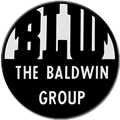
Specifications / Technical data
Builders: PRR Juniata Shops
Production: 1930-1948 (rebuilt type)
Total units built: 201 type M1 - 100 type M1a/M1b
PRR roster: 301 (1923-1948)
Wheels: 4-8-2 (UIC 2-D-1)
Loco weight: 385.000 lb (no tender)
Lenght: ?
Power: Coal/Oil
Gauge: 4 ft 8,5 in
Driver diameter: 76"
Cylinders: 2 (27 x 30 in)
Valve gear: Walschaerts
Pressure: 270 psi
Tractive effort: 69.700 lbf
Pennsylvania Railroad M1b class.
Designed to haul passenger trains, Pennsylvania Railroad used its M1 class mainly to fast freight services. Many units were assigned at Eastern Region with Middle Division to move heavy coal consists. "Pennsy" Mountains served pulling a large quantity of freight trains, to the maximum war effort of the United States during World War II. After the war, the new variants (M1b) were used essentially to pull merchandise trains on the lines to the west of Pittsburgh.
Baldwin 4-8-2 M1b Pennsylvania Railroad #6758 data
Road Number: 6758
Road Number Sequence: 1st
Type: 4-8-2
Class: M1a, M1b
Builder: Juniata
Built: 1930
CN: 4229
Disposition: sold for scrapped 2/58
Previous Owner: =
Remarks: rebuilt 12/48 M1b
Serial Number: 12004
Assignment 1950/1954: Eastern Region / Middle Division
Assignment 1956/1957: Pittsburgh Division
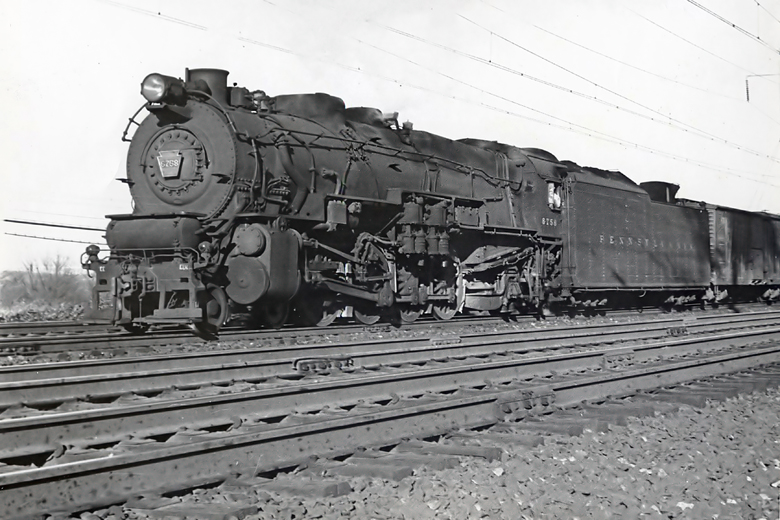
M1 class Pennsylvania Railroad #6758 (1942)
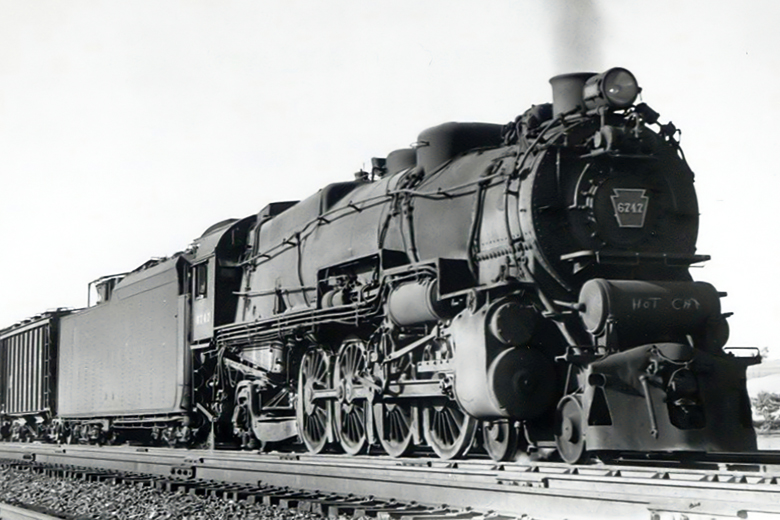
M1b class Pennsylvania Railroad #6747 (1954)
M1b steam locomotive in ho scale of AT Collection's roster is a model manufactured by BLI with a new Paragon 2 sound decoder. This engine is reproduced as the prototype, but it is necessary, anyway, the addition of some details. See the weathering card in the gallery here below, to watch improvement work.
